Location: Pittsburgh, PA, USA
I. PROJECT INTRODUCTION
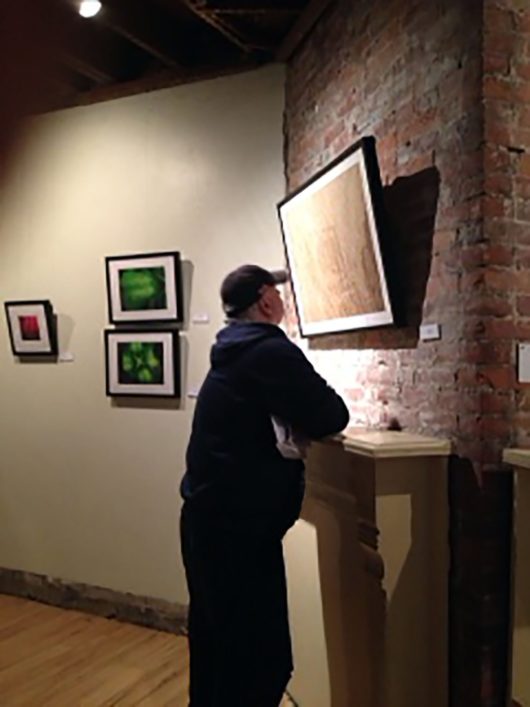
Exhibition Image. Photo © Donna Allegretti.
NATURE BODY CONNECT WAS AN experimental, interactive exhibition of digital art and photography. It took place at the AIM (Artists In Mission) Gallery in November 2014 in Pittsburgh PA. This unique exhibition, featuring thirteen art works, explored the visual and in some cases biological similarities between the natural world, the environment, and the human body. Nature Body Connect was created in collaboration with Acupuncturist, Nicole Olsen of Positive Life Acupuncture, in New York, whose hands-on knowledge about the human body was invaluable to the development of many of the art pieces.
With the many advances in research and increased understanding of how the human body reacts with the environment and the Earth, the medicinal and nutritional qualities of whole plant-based food and clean water in relation to sustaining health, and the physiological and psychological benefits of being around and interacting with nature; the awareness of the symbiotic connection between human beings and our environment is becoming increasingly evident. The goal of this exhibition was to provide the viewer with the opportunity to consider the visual and in some cases biological similarities between the human body and our environment in a unique and meaningful way.
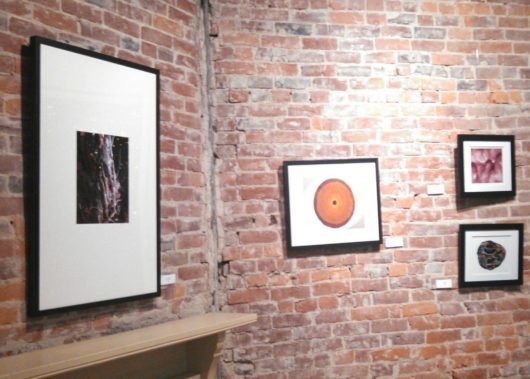
Exhibition Image © Stefani Allegretti
A unique aspect of this exhibition was that it was both interactive and educational. Attendees were invited to participate in a poll, which prompted them to choose if they thought each digital artwork or piece of photography was something from nature/the natural world or the human body. After walking through the exhibition, examining and categorizing each piece, participants received ‘answer’ cards, which revealed the origin of each art piece and provided factoids about each piece. These factoids provided information about specific parts of the body or nature relative to each artwork. The results of the poll were then calculated based on each participant’s choice-Nature/Natural World or the Body. The artworks and participatory element provided a context in which to view and discern if there is indeed ambiguity between the aspect of the human body and nature when similarities in both form, texture, color and in some cases function exist.
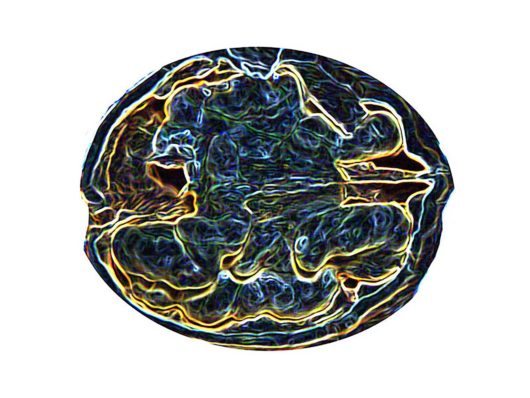
ANTERIOR, Digital Art work, 2014. © Stefani Allegretti
Additionally, the poll or interactive element created an opportunity for viewers to engage in a more meaningful way with each artwork. I believe that involving the viewer in a more interactive way, leads to the viewer engaging longer with the exhibition and perhaps engaging with the artist’s idea or work in a more meaningful way.
II. PROJECT FORMATION
MY INTEREST IN THE VISUAL and biological similarities between nature and the human body began when I was in college majoring in Studio Art. I was asked to complete an extra credit assignment for my sculpture class and compiled several photographs of aspects of nature that I found fascinating because they resembled very closely aspects of the human body.
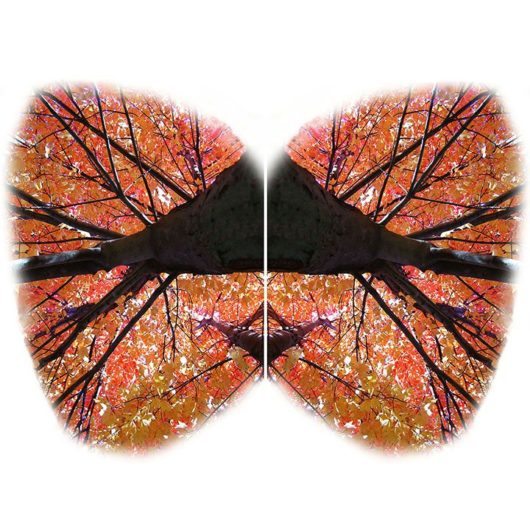
RECIPROCAL, Digital Art Work, 2014. © Stefani Allegretti
From that point, the research continued to develop in this area until 13 works of digital art and photography became, Nature Body Connect, A Solo Exhibition.
III. VIEWER PARTICIPATION/ENGAGEMENT
THE CONNECTION BETWEEN ASPECTS of the human body and our environment was a central goal of the exhibition. Providing viewers with a context in which to view and engage with the art in a more interactive way so they could consider this connection was achieved through the use of a paper poll or survey. This paper survey/poll (pictured below) was presented to each viewer when they entered the gallery. Upon entering the gallery, they were asked if they would like to participate in the poll, which required them to consider/vote if they thought each work originated from nature or of the body. This was indicated by a simple check mark in the ‘nature column’ or the ‘body column’. All of the titles of the art works provided anonymity about the art works true origin or the title was obscured in this respect.
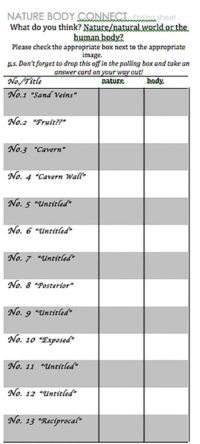 This interactive, participatory strategy resulted in viewers engaging with the artworks for a longer period of time and in a more meaningful way simply because they were actively participating.
This interactive, participatory strategy resulted in viewers engaging with the artworks for a longer period of time and in a more meaningful way simply because they were actively participating.
As stated in the article, Engaging Strangeness in the Art Museum: An Audience Development Strategy, ‘The assumption is that we learn best by doing, and that merely supplying a range of experiences and supporting material for the viewer to look at is insufficient. As a consequence, active participation has become a primary focus for the design of learning experiences in the museum environment.’1 Nature Body Connect was created in part using a constructivist approach where by the artist was raising awareness about the way we view the environment and Earth in relation to ourselves as humans. In addition to this participatory strategy, the exhibition was also in part a learning experience. The viewer became an active participant of the exhibition, rather than a passive viewer by participating in the survey.
As previously stated, the viewers were presented with the option to participate in a paper survey that prompted them to consider each art work and choose if the image originated from the human body or nature. Although the survey was suggested and not required to view the exhibition, the majority of the viewers chose to participate. This art exhibition through the use of the survey, prompted the viewer to interact on an interpretive level with the artwork and to consider the meaning of the ambiguity that exists on a larger scale. The artworks and participatory element provided a context in which to view to and discern if there is indeed ambiguity between the aspect of the human body and nature when similarities in both form, texture, color and in some cases function exist.
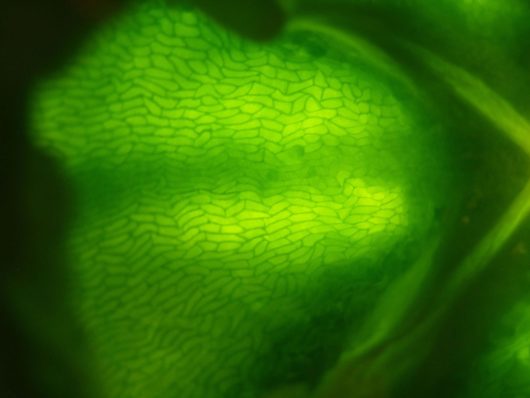
CAVERN WALL, Photograph 2010. ©Stefani Allegretti
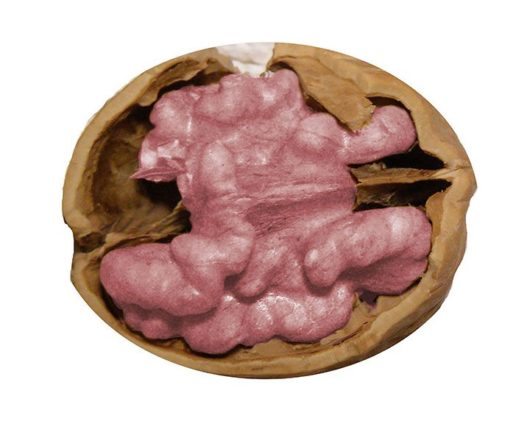
EXPOSED, Digital Art Work, 2014. ©Stefani Allegretti
It has been suggested that, ‘through add-in activities, art exhibitions are used as catalysts for learning by providing new experiences and creating challenges ‘.1As the viewer moved through the exhibition, voting on whether they thought each piece was of nature or of the human body, another phenomena occurred, discussion. For those viewers in groups or pairs, it was common to hear a viewer say, ‘Well I think this is nature because or I think this is the body because ‘. This conversation is partly due to providing a context in which to consider the artwork. ‘Contextualization can put artwork into broader historical, social, personal and political contexts, placing emphasis on the value of discussing ideas that surround the work and forging personal connections’1.
Nature Body Connect also engaged viewers by providing them with an educative element at the end of the exhibition through the use of an ‘answer card’. After viewers voted and walked through the entire exhibition, they were provided with the ‘answer card’ and compared their choices with the answer card. Many of the viewers were shocked to learn that the photograph or digital art piece they were viewing was actually something in the natural work/nature and not the human body. This answer card indicated the origin of each piece and provided factoids, which detailed the connection between the artwork and nature or the human body.
IV. EXHIBITION POLLING RESULTS/EDUCATIVE ELEMENT
VIEWERS WERE ASKED TO PLACE their complete survey in a receptacle before they left the exhibition. The results of the surveys were later calculated. Results are illustrated in the bar graph below.
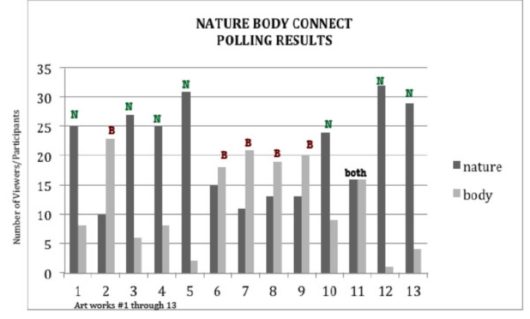
Figure 2. Nature Body Connect Polling Results, November 2014.
Forty-four attendees and viewers participated in the poll/survey. Results were tallied and assigned to each category: nature or the body. As illustrated in the chart, close to forty percent or five out of thirteen of the pieces were interpreted as being a part of the human body. One of the digital art pieces was split evenly with fifty percent of viewers interpreting the art work as being from the body and fifty percent of viewers interpreting the art work as being from nature. The remaining seven pieces were thought to be from nature or the natural world. Although the origin of each artwork is not revealed in the chart, the fact that nearly forty percent were incorrect in identifying if the origin of the image was of nature or the human body not only suggests but provides evidence that there is a visual ambiguity between nature and the human body since every image in this exhibition originated from nature/the natural world.
As stated previously, at the end of the exhibition, viewers were provided with an ‘answer’ card, which included the ‘answer’ to the question that was posted, ‘What do you think? Is this from nature/natural world or the human body?’ Each artwork was numbered in the gallery so it corresponded with the survey/poll number and answer card number. A mini image of each artwork was also provided on the answer card next to the answer (nature or human body) and the factoid/description.
The factoids provided information about how the image was created, what it actually was and why it was created for the exhibition, including facts about aspects of the human body or the natural world. Four of the images and accompanying factoids taken from the answer cards are listed in Table A, below.
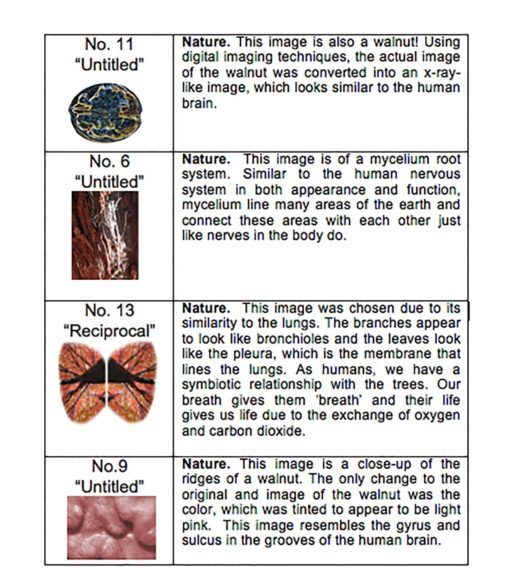
Table A. Nature Body Connect, Factoid/Answer card examples © Nicole Olsen & Stefani Allegretti.
At the end of the exhibition, when attendees viewed the answer cards, they were often surprised that certain images were of nature, and not the human body. This moment hopefully led to the realization that there is a definite visual ambiguity in regards to aspects of nature and the human body. And beyond that, there is a strong symbiotic relationship between the human body/humans in general, and nature/the natural world i.e. the Earth, upon which we live. Perhaps all of creation and all of life shares similar characteristics and traits.
V. REFLECTION
ALTHOUGH THE CERTAINTY OF the viewer reaching this larger overarching awareness about the symbiotic connection between the environment/natural world and human body is unknown, the use of this interactive element and polling strategy undoubtedly led to the viewer interacting with the artwork in a more meaningful way. Viewers became active participants because they had the opportunity to engage with the art using the paper survey and were asked the question, ‘What do you think?’

Exhibition Image. © Stefani Allegretti.
I believe that any artist concerned and passionate about the environment, who is creating art focused on the environment, typically has a goal of effectively conveying a message through their artwork. This type of participatory strategy can be used or altered in many gallery settings in order to help convey or support that message. Simply asking the viewer to respond to a question about your artwork will increase their active participation in viewing the work. Through the use of a paper survey or even an electronic poll for example, further viewer engagement can occur. Additionally, adding an educative element takes the idea of active viewing a step further. Art doesn’t have to be something we passively look at and walk by. It can be a mechanism that can transform the human consciousness. It can forever change the way a person looks at the world. They can see things through a completely different lens when a new connection is made.
VI. TAKEAWAYS
WHEN VIEWERS ARE PRESENTED with the opportunity to engage with art works and interpret them in a specific context, they will participate and engage more so and longer with the artwork and perhaps in more meaningful way. Those viewers who chose to participate in the poll spent more time with each art piece and in viewing the exhibition as a whole. The results of this exhibition also show that there is indeed a strong visual correlation between the natural world and aspects of the human body as indicated by the diverse polling results.
Works cited:
1 Deeth, J. (2012). Engaging Strangeness in the Art Museum: An audience development strategy. Museum & Society, 10(1), 1-10.
NATURE BODY CONNECT; Stefani A. Allegretti; Collaborator, Nicole Olsen LAc, Artists in Mission Gallery, Pittsburgh, PA; November 2014.
